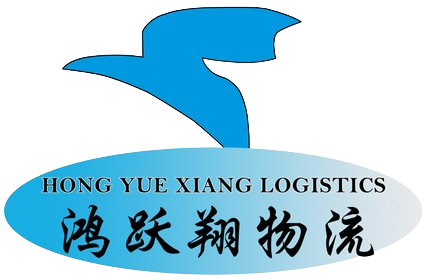News
Import Service Solutions: Streamlining Customs Clearance and Documentation
Understanding Customs Clearance Essentials
Definition and Core Objectives
When goods need to cross borders, they go through what's called customs clearance. Basically, this means getting permission from authorities to bring stuff into or out of a country. Companies have to fill out all sorts of paperwork stating what exactly is being shipped, how much it costs, where it came from originally. The main reasons behind this whole process are pretty straightforward. First off, governments want to make sure everyone follows their rules about imports and exports. Then there's collecting those tariffs and taxes on products coming in. And let's face it, nobody wants contraband or dangerous items slipping past border controls. Customs officials check everything carefully to protect citizens from harmful products while keeping track of what moves across international lines. For companies dealing with foreign markets, knowing how this works isn't just helpful it's essential. Messing up paperwork can lead to huge delays at ports or even fines that hurt bottom lines. Getting familiar with these procedures helps businesses keep operations running smoothly without running afoul of complex international trade laws.
The Customs Clearance Process Explained
Clearing customs means going through a bunch of important steps. First things first, anyone shipping stuff across borders needs to hand over all those papers - think invoices, packing slips, and whatnot. Customs officers check these documents against what actually shows up at the border. If there's anything off between the paperwork and the real goods, expect headaches down the road. Delays happen fast, and nobody wants extra charges piling up. When everything checks out, the goods get stamped approved and sent on their way either into or out of the country. How long does all this take? Well, simple shipments might clear within hours while complicated ones could drag on for days. Being organized with proper paperwork makes a huge difference here. Anyone dealing with international shipping should know this drill inside out because getting stuck at customs disrupts business operations and costs money.
Essential Documentation for Import Efficiency
Required Documents for Smooth Clearance
Getting through customs smoothly requires having the right paperwork ready ahead of time. The main documents needed typically consist of things like the bill of lading, commercial invoice, packing list, plus whatever licenses or permits might apply to specific cargo. These papers aren't just bureaucratic necessities they actually serve important functions when customs officials inspect shipments. Take the commercial invoice for instance it needs to clearly describe what's being shipped, how much it's worth, and outline the trade conditions involved. Customs agents rely heavily on this information to determine duties correctly. When companies keep all these documents properly organized and complete from the start, they tend to see faster processing times at border checkpoints. This cuts down waiting periods and saves money overall while keeping products moving toward their destinations without unnecessary delays according to GDS Freight Solutions research.
Common Documentation Pitfalls to Avoid
Knowing about those pesky issues that pop up with paperwork can actually save companies loads of money and time down the road. We see plenty of problems regularly - stuff like wrong value declarations, forgotten signatures, or just plain old misclassified goods according to tariffs. These kinds of slipups don't just slow things down at customs, they often come with big ticket fines too. Before sending anything off to customs officials, it really pays to go through every single document again and again to make sure nothing's missing or wrong. Most businesses find that setting up occasional training workshops helps everyone stay sharp on what needs doing. Keeping tabs on how documentation rules change over time makes all the difference when trying to avoid headaches during import/export processes as explained by GDS Freight Tips resource.
Digital Tools for Streamlined Record-Keeping
When companies start using digital tools made for handling customs paperwork, they often find their record keeping gets much better along with how they track compliance stuff. The electronic document management systems really cut down on time spent doing boring repetitive work, which naturally makes mistakes less likely to happen. Plus these digital options help talk to customs brokers without all the back and forth emails and phone calls, so things move through customs faster than before. And let's face it, when there's an audit coming up or someone shows up for inspection, being able to pull out those documents quickly saves everyone headaches and keeps shipments moving instead of sitting around waiting. Companies like GDS Freight have seen this firsthand with their technology integration efforts over recent years.
Technology-Driven Customs Solutions
AI and Automation in Modern Clearance
Bringing AI and automation into customs work is changing how fast and accurate things get cleared through borders. With better data analysis and smarter risk assessments, customs officers can focus their attention where it matters most. They no longer need to check every single shipment thoroughly, just those packages that look suspicious based on various factors. This means goods pass through checkpoints much quicker without unnecessary holdups. Automated systems also make submitting all the paperwork a lot easier for businesses, cutting down on errors and wasted time. Looking ahead, more companies will likely adopt these tech solutions as they become standard practice across the industry. While there might be some resistance initially, the long term benefits for compliance and operational smoothness seem pretty clear.
Implementing Customs Management Software
Customs management software helps bring all documentation and compliance tasks under one roof, making sure everything gets submitted correctly and on time. These platforms work well with logistics companies too, giving companies up to date information throughout their supply chains. The ability to track shipments and handle paperwork becomes much easier when systems are connected properly. Businesses looking at implementing such software need to figure out what features matter most for their operations. Compatibility with current IT infrastructure is essential for smooth implementation without major disruptions. A good fit between software capabilities and business requirements ensures better performance metrics and ultimately higher returns from this type of technology investment.
Strategies for Global Compliance and Efficiency
Navigating Regional Regulatory Landscapes
Dealing with all the different rules across various regions is pretty much a must if companies want to comply with global customs standards. Every area tends to have its own set of customs rules and trade deals that need following. Businesses really need to keep up with how these international trade laws change over time. Missing out on updates can lead to serious problems down the road when shipments get stuck at borders because something wasn't compliant. Working alongside compliance specialists who know the local quirks makes a big difference. These experts bring practical knowledge that helps improve how companies handle compliance issues. Taking this kind of forward thinking stance cuts down on potential headaches while making those international shipments go through much faster without unnecessary complications.
Proactive Risk Management Approaches
A good risk management plan makes all the difference when it comes to avoiding compliance problems during customs processing. Companies should look closely at their supply chains to spot weak spots before small issues turn into big headaches down the road. Regular checks of customs procedures and paperwork are essential too since they reveal areas where things might go wrong, giving businesses time to fix them before trouble starts. Keeping employees up to date on new regulations through proper training is another must have component. Nobody wants surprises when dealing with customs authorities. When companies take this kind of forward thinking approach to managing risks, they protect themselves from costly compliance mistakes while making sure their customs operations run smoother overall.
Building Collaborative Logistics Partnerships
Strong connections with logistics partners, customs brokers, and freight forwarders really matter if companies want better efficiency and fewer errors during customs clearance. When companies work closely together, they share knowledge and tools that help solve problems in the customs process. A good network means businesses respond faster when something goes wrong during shipping or at the border, so operations don't get stuck. Trust builds up over time through these partnerships, and that makes the whole supply chain run more smoothly. Companies that combine what they do best with others find it much easier to handle all the complicated rules of international trade.
Recommended Products
Hot News
-
A Vital Freight Mode Connecting The World
2024-01-16
-
The Continued Development Of Our Freight Shipping Company
2024-01-16
-
The Importance Of A Trucking Company
2024-01-16

 EN
EN
 AR
AR
 FR
FR
 DE
DE
 PT
PT
 RU
RU
 ES
ES
 TR
TR
